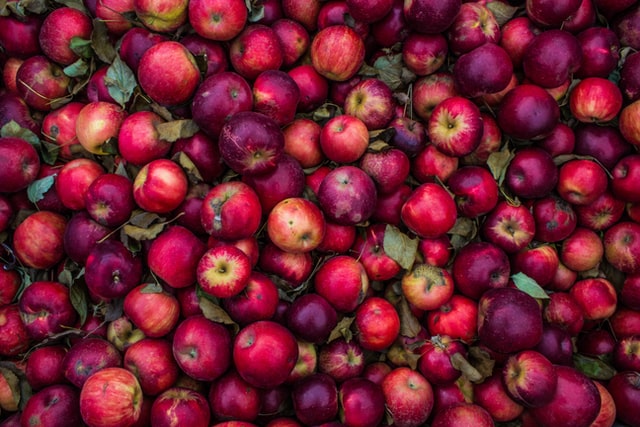If you’re feeling extra bloated, lethargic and all around uncomfortable from all the rich holiday foods, trying a low FODMAP diet will help you get back to baseline! This diet can be a bit of a commitment, if you decide to go all in. But it is easily customized and modified for your needs!
What are FODMAPs?
FODMAP stands for Fermentable Oligosaccharides, Disaccharides, Monosaccharides, and Polyols (short chain carbohydrates and sugar alcohols that are poorly absorbed by the body, causing intestinal distress). FODMAPs occur naturally in some foods or are added to foods in the form of additives and preservatives. FODMAPs ferment in the large intestine during digestion, creating gas and causing the intestine to expand, leading to discomfort, pain and bloating. FODMAPs are indeed found in many healthy foods, like fruit and vegetables. This does not make them unhealthy, rather, some may simply have a higher sensitivity to that particular fruit or vegetable.
Common FODMAPs
Fructose- Found in fruits and vegetables
Fructans- Found in some fruits, vegetables and grains
Lactose- Found in many dairy products
Galactans- Found in legumes
Polyols- Found in artificial sweeteners
High FODMAP Foods
Apples
Pears
Mangoes
Cherries
Figs
Watermelon
Dried Fruits
Peaches
Blackberries
Plums
Artichoke
Garlic
Leeks
Onion
Mushrooms
Cauliflower
Snow Peas
Wholemeal bread
Rye
Muesli
Wheat pasta
Red Kidney Beans
Split Peas
Falafels
Baked Beans
Soft Cheeses
Milk
Yogurt
Cashews
Pistachios
Honey
High Fructose Corn Syrup
Sorbitol
Xylitol
Erythrytol
Chorizo
Sausage
This list is not comprehensive and is only meant to give an overview of some high FODMAP foods.
What is a low FODMAP diet?
A low FODMAP diet is a diet that restricts and eliminates foods that are high in those FODMAPs that cause intestinal issues like bloating, pain, constipation, diarrhea, and gas. The diet is meant to last 3-8 weeks before slowly reintroducing other foods to determine if certain foods trigger symptoms. Because this is a very restrictive diet, it is not meant for long term use. This is an elimination diet that can help give the digestive tract a good reset, as it is gentle on the system. This diet is traditionally used to aid people who live with Irritable Bowel Syndrome to identify triggering foods, but the guidelines for a low FODMAP diet work well for a general belly reboot too!
Low FODMAP Foods
Banana
Blueberry
Cantaloupe
Dragon Fruit
Grapes
Guava
Honeydew
Kiwi
Lime
Lemon
Mandarins
Oranges
Papaya
Pineapple
Prickly Pear
Raspberry
Strawberries
Bean Sprouts
Beets
Black Beans
Broccoli
Brussel Sprouts
Butternut Squash
Cabbage
Carrots
Chick Peas
Cucumber
Green Beans
Green Pepper
Ginger
Kale
Lentils
Lettuce
Potato
Pumpkin
Raddish
Spaghetti Squash
Tomato
Yam
Zucchini
Beef
Chicken
Lamb
Pork
Turkey
Cold Cuts
Canned Tuna
Fresh Fish
Coconut-milk, cream, flesh
Corn products
Gluten-free and Wheat-free products
Oats
Oatmeal
Quinoa
Rice and Rice Flour
Chia Seeds
Hemp Seeds
Poppy Seeds
Pumpkin Seeds
Sesame Seeds
Butter
Ghee
Brie Cheese
Camembert Cheese
Cheddar Cheese
Feta Cheese
Monterey Jack
Eggs
Almond Milk
Hemp Milk
Lactose-Free Milk
Oat Milk
Rice Milk
Soy products
Tempeh
This list is not comprehensive and is only meant to give an overview of some low FODMAP foods.
Be mindful of condiments and sauces, as many are loaded with FODMAPs.
3 Steps
Step 1: Low FODMAP Diet
For 3-8 weeks- swap high FODMAP foods for low FODMAP foods.
Step 2: FODMAP Reintroduction
Over the following 8-12 weeks reintroduce one FODMAP at a time, one food at a time, over the course of three days. Increase serving size each day and monitor your tolerance.
Step 3: FODMAP Customization
As you have reintroduced foods and FODMAPs slowly, you’re much more aware of what your body tolerates and what it does not. Going forward, you can tailor your diet to your specific needs. Your body should be feeling much better at this point, as you avoid foods that are triggering for you.
